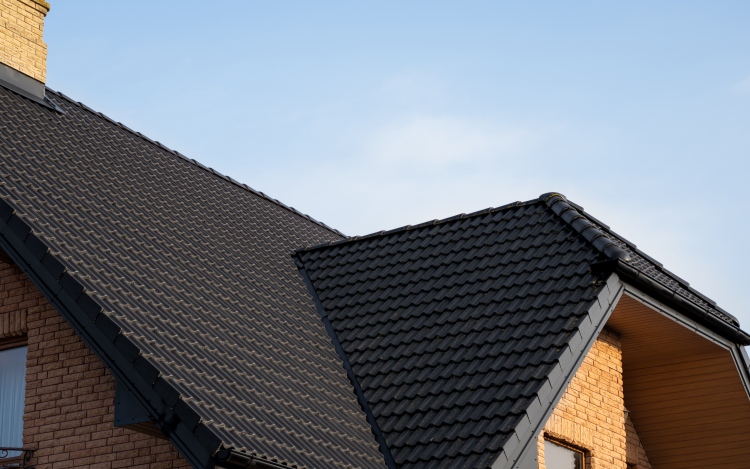Roofing is an essential part of protecting your home from the elements, yet many homeowners are unsure which type of roofing material is best for their needs. Two of the most popular options for roofing materials are tile and shingle roofs. It’s important to weigh the pros and cons of both before making a decision. Let’s take a look at some key differences between tile and shingle roofs to help you make an informed decision.
Consider Your Climate
When making your decision, it’s important to consider the climate you live in. Tile roofs tend to be more suitable for arid and hot climates since they reflect the sun’s rays and help keep your home cool. In contrast, shingle roofs are perfectly suited for areas that experience extreme cold temperatures or heavy snowfall because they can withstand more extreme weather conditions. Tile roofs are also less susceptible to damage from high winds, so if you live in a windy area, this may be the better option for you.
Durability
Tile roofs are highly durable and can last anywhere from 50-100 years if well-maintained, while shingle roofs will typically only last 25-30 years—a significant difference in lifespan if you plan on keeping your home for a long time. Tile roofs also tend to be less prone to damage due to wind, hail, or snow than shingled roofs, making them a great choice if you live in an area with frequent storms or heavy snowfall. Furthermore, tile roofs don’t require as much maintenance as shingle roofs because they don’t suffer from common issues like algae growth or discoloration.
Installation
When it comes to installation, tile roofs are more difficult and time consuming to install than shingle roofs. This is because tiles must be individually placed on the roof and require a certain amount of skill to ensure they’re properly installed. In contrast, shingle roofs can be installed relatively quickly since they come in pre-cut strips that can be quickly applied to the roof. Furthermore, shingle roofs are typically much easier and less expensive to repair than tile roofs since tiles must be individually removed and replaced.
The cost to have a roof professionally installed will vary depending on the material and size of the job. Tile roofs tend to be more expensive to install than shingle roofs because of their complexity, requiring specialized skill and longer labor time. Additionally, tile roofs may need additional underlayment materials which will increase the overall cost. On the other hand, shingle roofs are usually less expensive than tile roofs since they are quicker and easier to install. Ultimately, the best way to get an accurate cost estimate is to consult with a professional roofing contractor who can assess your specific situation.
Cost
Shingle roofs are generally cheaper than tile roofing initially, but over time their cost adds up due to more frequent repairs and replacements compared to tile rooftops. In addition, replacing a single tile is much easier than replacing individual shingles since tiles are larger and fewer in number compared to shingles. This makes it significantly easier (and cheaper) to repair any damage caused by weather or other sources without needing to replace the entire roof.
Appearance
When choosing between a tile and shingle roof, it’s important to consider what kind of aesthetic you want for your home. Both types come in different colors and styles so you can find one that fits your personal preference perfectly—from classic Spanish style clay tiles to modern asphalt shingles—but there’s no denying that tile rooftops offer more variety when it comes to design choices compared to shingles. Plus, many homeowners love the classic look of tiles that can boost curb appeal and potentially even increase the value of their property if they ever decide to sell.
Shingles can also look nice and make a home more attractive. Many homeowners prefer the classic look of shingles, which come in a variety of colors and styles to fit any aesthetic preference. Modern asphalt shingles are particularly popular thanks to their ability to resist damaging ultraviolet rays while still providing a stylish look. Additionally, they come in a variety of textures and finishes, allowing homeowners to choose one that best suits the look and feel of their home. In short, shingles are an affordable option when it comes to roofing materials and can offer great aesthetic appeal as well.
Maintenance
As mentioned, tile roofs require significantly less maintenance than shingle roofs. Tiles are larger, so they’re more resistant to damage from heavy winds and hail. They also don’t suffer from common issues like algae growth and discoloration that can be seen on shingles. Tile rooftops aren’t as affected by extreme weather conditions either, so they won’t require as much upkeep over their lifespan compared to shingle roofs. Furthermore, replacing individual tiles is much easier and cheaper than having to replace individual shingles that make up a shingle roof. Proper maintenance for tile roofing consists mostly of inspections and removing debris from the gutters, making it an appealing option for those who want to avoid major or frequent repairs.
Shingle roof maintenance requires a bit more effort than tile roofs, but is still relatively easy to manage. Regular inspections and regular cleaning of gutters are important to keep shingles in good condition. Additionally, it’s vital to watch out for signs of wear and tear that can be caused by extreme weather conditions such as hail, heavy winds, and snow. It’s also important to check for any missing or loose shingles that may have come off due to bad weather. In extreme cases, a full roof replacement may be needed if too much damage accumulates over time. Proper maintenance is key to keeping shingle roofs in good condition and can extend their lifespan significantly.
Ultimately, both tile and shingle rooftops have their own unique advantages depending on your needs—from cost savings in the short term with shingles all the way up to long-term durability with tiles. Consider factors like budget, climate conditions where you live, preferred aesthetic style, ease of maintenance and repair costs over time as well as any potential resale value when comparing each option side by side before making a final decision about which type of rooftop is best for you! With careful consideration of these factors combined with professional advice from a qualified contractor who specializes in roof installation projects like these—you can make sure that whatever type of rooftop you choose is an investment that pays off for years down the line.
Saturday 26 October 2024




